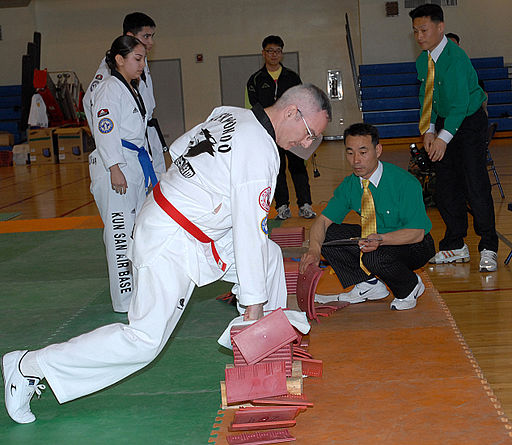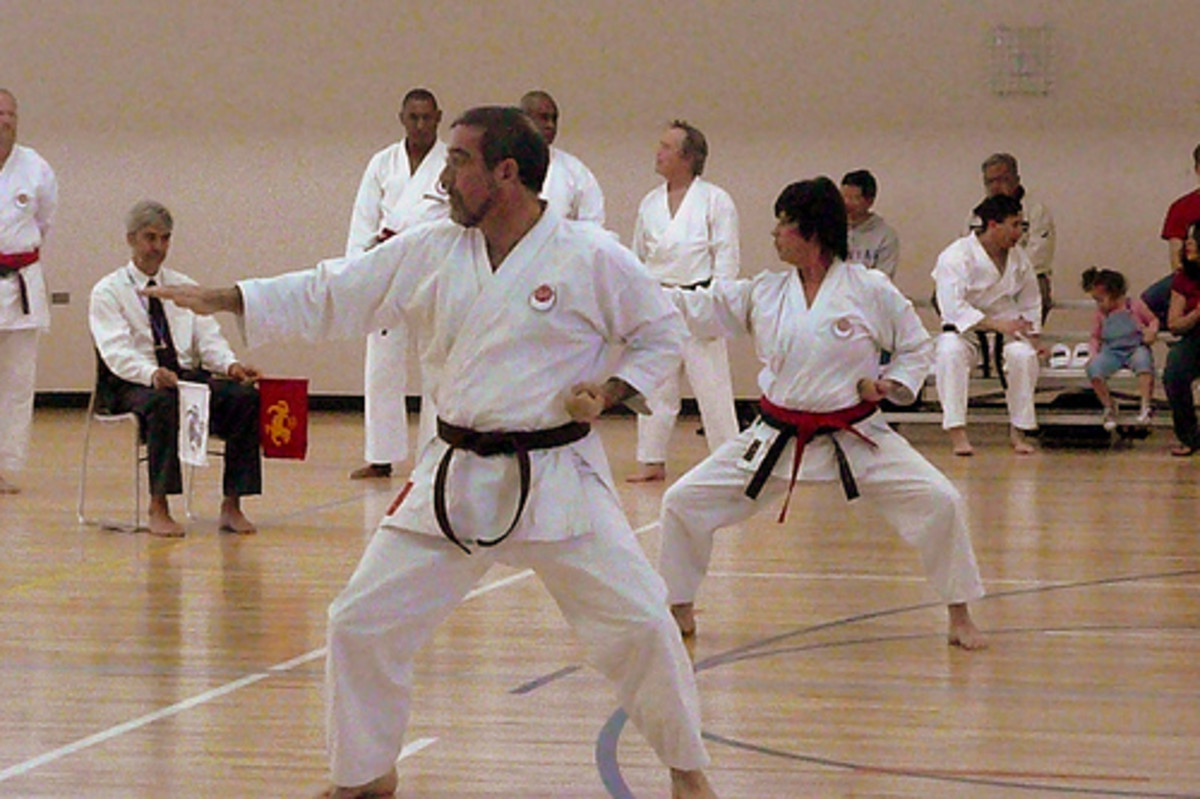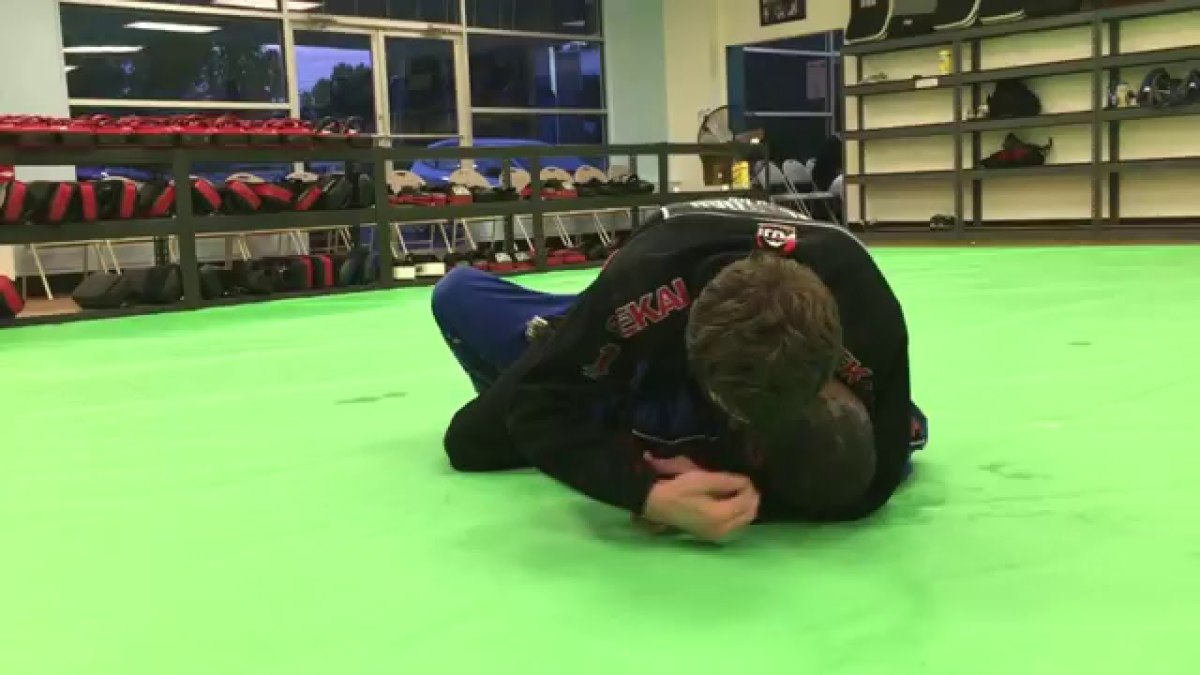- HubPages»
- Sports and Recreation»
- Individual Sports»
- Martial Arts
How to Break a Board Karate Chop Style

by Christopher Peruzzi
Board breaking – it’s probably the last real stereotype left from a generation of unenlightened people that have seen too many secret agent films from the seventies.
You know the scenes I’m talking about. The first one is that the secret agent will find himself at his ancient karate master’s old dojo (practice hall) while the master is teaching a young student about the art of breaking a board or a concrete brick. The master shatters the board or brick with little effort, demonstrating that he has a secret knowledge of channeling that untapped potential of the human body. Later in the movie, the secret agent will use his version of a “karate chop” or “judo chop” to strike the neck of an unsuspecting guard and either kill him or knock him unconscious.
Hollywood.
My favorite quote regarding the art of board breaking comes from Bruce Lee in Enter the Dragon. He said, “Boards don’t hit back.”
There are only two reasons to break boards. Depending on your rationale and point of view, only one is really legitimate. To the shallow minded, breaking boards is a way to pick up chicks.
“I just broke a board with nothing but my bare hand.”
“Why did you do that?”
“Cause I’m really cool.”
“Oh, then I’ll sleep with you.”
In reality, the shuto or “knife hand” is rarely used in practical application. However, the breaking of boards is still used as an exercise of focus and strength – hence the second reason for doing it.
One wooden board represents the strength and durability of a human rib. If you can break a board, you can break a rib. It’s that simple. We break boards because, well, practicing by breaking actual ribs is only done in Stallone films. Plus, getting people to volunteer for rib breaking is not only difficult but ethically problematic.
From my own experience as a martial artist, I can tell you that if you are so inclined, that the easiest rib to break is the floating rib at the bottom of the rib cage. In most street fights, it’s a game ender without having to do much else after that. While there is some truth to the shuto, chop to neck, doing some damage to an opponent, I can’t imagine a set of circumstances where this would be used regularly and practically outside of a tournament or a competition. A skilled practitioner may have this in his combat repertoire, but if you are in a life and death situation, stick to what you know best.
Do you think there's any real value in board breaking?
Breaking a Board
Don’t ever think that you’re going to wake up one day and say, “Today, I’m going to break a board with my bare hand. I saw the guy on TV do it.”
It doesn’t work like that.
The guy on TV was most likely a practitioner with, at minimum, a few months of training under his obi (karate belt). Strengthening your hand and learning how to work the muscles of the blade of your hand takes some amount of time. You will need to condition your hand for such strikes. The best way to do this is to practice striking a firm but padded surface like a Makiwara board. This will allow your hand to harden and get adjusted to harder surfaces. When you can flex and harden the fleshy part of your bladed hand, you will be on your way.
Breaking a board takes a significant amount of focus. As comical as it sounds there is some truth to the karate yell, “Hai ya!!” – which no one does. The reality is something called a kiai (pronounced “kee-yah”). The yell is a focused release of the chi (life force). Don’t let the phrasing fool you – this is not mysticism; it’s science. A kiai is similar to a grunt that a weightlifter makes when he tries to tap his adrenals for more strength. In this case, it’s to help the body prepare for the strike. This often helps the artist work with the impact in both creating and receiving blows.
The object of any strike is to hit “past the target”. What does that mean? You should not be focused on striking the surface of the wood, but be focused on striking a foot past the surface of the board. Think of breaking the board as part of the trip and not the destination of the hit.
Here’s what you need to do in order to break a board:
- Get a small piece of wood. It should not be fresh. The best results are with pine. It should be 12 inches measured diagonally and one inch thick (the approximate thickness of a human rib).
- Set up. Set the board on two blocks with space between the two blocks. Line the block so that the wood grain is parallel to the blocks and to the blade of your hand. If you are going to break the board with a chop. Should you decide that breaking the board with a kick, it might be best to have a person hold the board so that the grain is horizontal and that they are gripping the board from top and bottom. This is done for side kick breaks.
- Form, Condition, and Targeting. Assuming that you’ve been conditioning your hand for the last few months, you will want to strike the board. Your hand should be rigid, strong, and similar to the blade it’s imitating. Be sure that your elbow has some bend in it. A fully extended arm may upon the wrong type of impact get water on the elbow (also known as tennis elbow). Once again, remember the object is to hit THROUGH the board. The surface of the board is not the target. The target is two feet through the board.
- Strike! Focus yourself. Think through the board. When you strike, strike with a kiai. Hit with the blade of your hand which is the meaty part between the bottom of the pinky to the wrist.
Should you decide that punching is more appropriate focus your energy on your two knuckles on the index and middle fingers to hit the grain of the wood. The proper form is with a straight wrist and knuckle impact distribution of 70% on the index knuckle and 30% on the middle finger knuckle.
Once again, if you fail to do this on the first try, don’t be discouraged. This is an exercise that takes months to years to perfect. When practicing this always remember that it is important to avoid injury.
Karate in Amazon
Final Words
Board breaking is an exercise – nothing more.
There will never be a serious need for it so long as we have access to tools like a saw. As far as its necessity to martial arts, it is not important. People forget why an individual takes up martial arts.
Hint: it’s not to be a bad ass.
A responsible person takes up karate or the martial arts for one of three reasons: to defend himself, to build confidence, and to build coordination. Anything else is not worth of the heart, discipline, and honor of a true martial artist.
As far as practical application of the board breaks, it is a safe and ethical way to exhibit the power and form of an act that should only be used in the direst of circumstances. Rib breaking and injuring anywhere in a person’s neck is never the first response to a high emotional situation and using such force should always be a last resort when words and rationality have failed.









